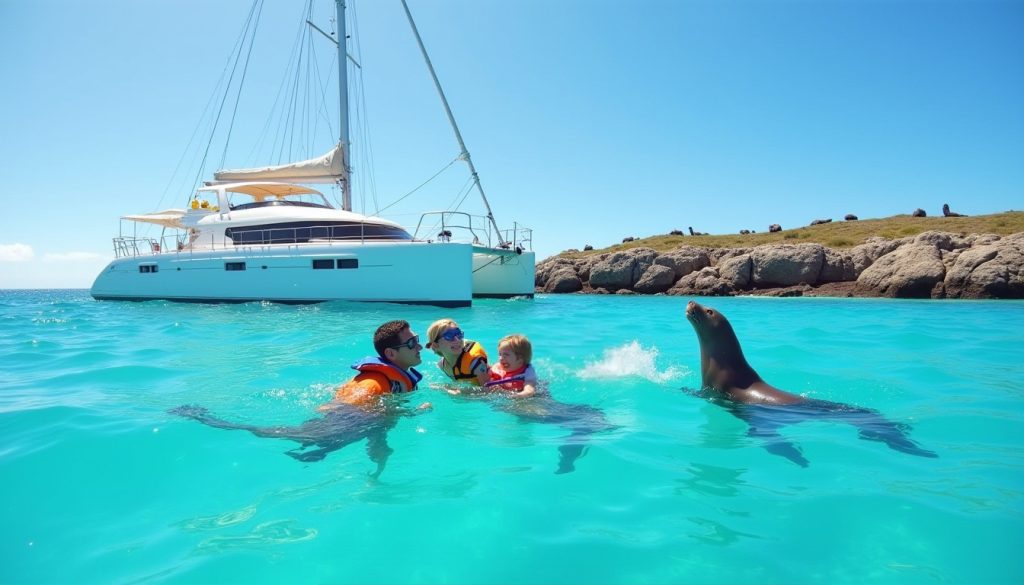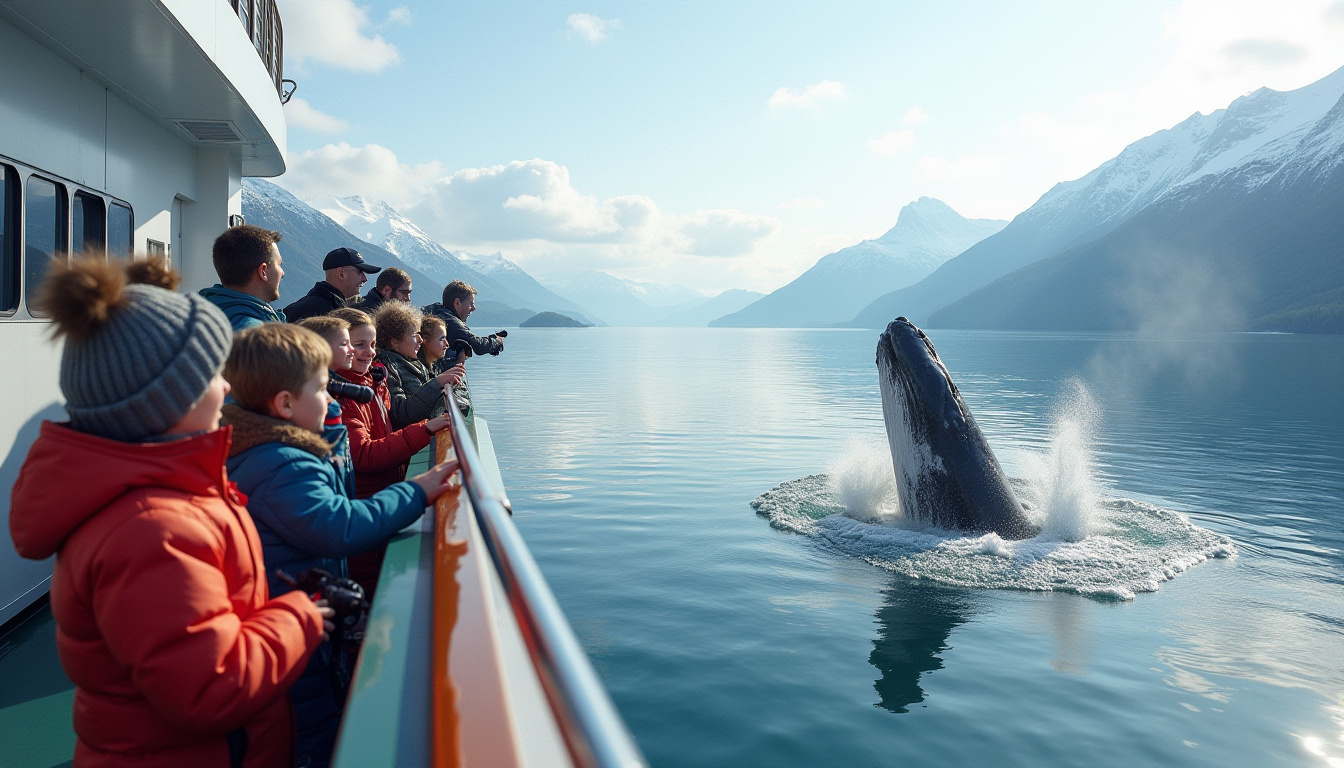Yachting and nature come together to offer an extraordinary way to experience wildlife watching in 2025. Imagine sailing through pristine waters, spotting dolphins leaping alongside your yacht, or observing a majestic whale breaching the surface—all from the comfort of a luxurious vessel. This unique combination allows you to immerse yourself in the natural world while enjoying the freedom and luxury of a yacht charter. In this article, we’ll explore the best destinations, tips, and strategies for a wildlife-focused yachting adventure, ensuring you make the most of your nature-inspired journey.
Why Combine Yachting and Nature for Wildlife Watching?
Yachting and nature provide a perfect platform for wildlife watching, offering access to remote areas where marine and coastal animals thrive. For instance, a yacht can take you to secluded spots that are inaccessible by land, giving you a front-row seat to nature’s wonders. Moreover, the quiet environment of a yacht—especially a sailing yacht—minimizes disturbance to wildlife, allowing for more authentic encounters. Additionally, yachting offers the flexibility to follow wildlife migrations or adjust your itinerary based on sightings, making it an ideal choice for nature enthusiasts.
Top Destinations for Wildlife Watching by Yacht
The Galápagos Islands: A Biodiversity Hotspot
The Galápagos Islands are a premier destination for yachting and nature, renowned for their incredible biodiversity. This remote archipelago, located off the coast of Ecuador, is home to unique species like giant tortoises, marine iguanas, and blue-footed boobies. For example, you can anchor near Santa Cruz Island and take a tender to explore the Charles Darwin Research Station, where you’ll learn about conservation efforts. Additionally, snorkeling in the Galápagos allows you to swim with sea lions and penguins, offering an up-close look at marine life in its natural habitat.
Alaska: Whales and Wilderness
Alaska is another top choice for yachting and nature, particularly for those interested in whale watching. The Inside Passage, a network of waterways along Alaska’s coast, is a prime spot for spotting humpback whales, orcas, and porpoises. For instance, you can cruise through Glacier Bay National Park and witness a whale breaching against the backdrop of towering glaciers. Furthermore, the region’s rugged coastline is home to bald eagles, bears, and seals, making it a diverse wildlife destination. Alaska’s pristine wilderness and abundant marine life make it a must-visit for nature lovers.
Choosing the Right Yacht for Wildlife Watching
Sailing Yachts: Quiet and Eco-Friendly
When planning yachting and nature trips for wildlife watching, a sailing yacht is often the best choice. Sailing yachts rely on wind power, which makes them quieter than motor yachts and less likely to disturb animals. For example, a 60-foot sailing yacht can glide silently through the waters of the Galápagos, allowing you to approach sea lions or dolphins without startling them. Additionally, sailing yachts are more eco-friendly, reducing your environmental impact while you explore nature. This type of yacht ensures a more immersive and respectful wildlife experience.
Motor Yachts: Speed and Range
If you’re covering large distances or following migratory patterns, a motor yacht might be a better option for yachting and nature adventures. Motor yachts offer greater speed and range, allowing you to reach remote wildlife hotspots quickly. However, they can be noisier, so it’s best to turn off the engines when you’re near animals to minimize disturbance. A 70-foot motor yacht, for instance, might include a viewing deck with binoculars and a tender for closer exploration, making it ideal for spotting whales in Alaska or other expansive regions.
Tips for Wildlife Watching on a Yacht
Timing Your Trip for Peak Sightings
Timing is crucial when planning yachting and nature trips for wildlife watching. Many species have specific migration or breeding seasons, so research the best times to visit your chosen destination. For example, humpback whales are most active in Alaska from June to August, while the Galápagos offers year-round wildlife opportunities, with peak sea lion activity in September. Additionally, consider the time of day—early mornings and late afternoons are often the best for spotting animals, as they’re more active during these cooler hours.
Respecting Wildlife and Their Habitat
Respecting wildlife is essential for a responsible yachting experience. First, maintain a safe distance from animals to avoid causing stress—most guidelines recommend staying at least 100 yards from whales and dolphins. Moreover, avoid feeding wildlife, as it can disrupt their natural diet and behavior. For instance, if you’re snorkeling in the Galápagos, don’t touch the marine iguanas or sea turtles, even if they swim close to you. Also, work with your crew to ensure the yacht follows eco-friendly practices, such as proper waste disposal, to protect the environment.

Activities to Enhance Your Wildlife Experience
Snorkeling and Diving with Marine Life
Snorkeling and diving are fantastic ways to enhance your wildlife watching experience on a yacht. For example, in the Galápagos, you can snorkel with playful sea lions or dive with hammerhead sharks for a thrilling encounter. Additionally, many yachts provide snorkeling gear and can arrange guided dives with certified instructors. If you’re in Alaska, you might opt for a kayak excursion to paddle alongside otters or seals. These activities allow you to connect with marine life on a deeper level, making your trip even more memorable.
Photography and Journaling
Documenting your wildlife encounters can add a meaningful layer to your yachting journey. For instance, bring a camera with a zoom lens to capture images of whales breaching or birds soaring overhead. Alternatively, keep a journal to record your sightings, noting the species, location, and behavior of the animals you encounter. Furthermore, involve your family or travel companions in creating a shared photo album or logbook, which can serve as a keepsake of your nature-focused adventure. These activities help you appreciate and remember the beauty of the wildlife you’ve seen.
Practical Considerations for a Nature-Focused Yacht Trip
Packing for Wildlife Watching
Packing thoughtfully can enhance your yachting and nature experience. First, bring binoculars to spot distant wildlife, such as birds or whales, from the deck. Additionally, pack a waterproof camera or a GoPro for underwater photography during snorkeling or diving. For cooler destinations like Alaska, include warm layers, waterproof jackets, and non-slip shoes to stay comfortable on deck. Also, don’t forget sunscreen, hats, and polarized sunglasses to protect yourself from the sun’s glare on the water, especially in tropical regions like the Galápagos.
Working with an Experienced Crew
An experienced crew can make a significant difference in your wildlife watching trip. For example, a knowledgeable captain can navigate to the best spots for sightings, using their expertise to track animal movements. Moreover, a naturalist guide onboard can provide insights into the species you encounter, explaining their behaviors and habitats. If your yacht doesn’t include a guide, consider hiring one at your destination—many charter companies can arrange this. A skilled crew ensures you maximize your wildlife encounters while staying safe and respectful.
Costs and Budgeting for a Wildlife Yacht Charter
The cost of chartering a yacht for a wildlife-focused trip varies depending on the destination, yacht type, and duration. A week-long charter in the Galápagos on a 60-foot sailing yacht might start at $30,000, while a similar trip in Alaska on a motor yacht could cost $40,000 or more. However, these prices often include the crew, fuel, and basic provisions. To manage your budget, consider traveling during the shoulder season, when rates are lower and wildlife is still active. Also, factor in additional expenses like guided tours, diving equipment, and gratuities for the crew.
Conclusion: Discover Wildlife with Yachting and Nature
Yachting and nature offer a remarkable way to experience wildlife watching in 2025, blending luxury with the wonders of the natural world. Whether you’re exploring the biodiversity of the Galápagos or the wilderness of Alaska, a yacht charter provides unparalleled access to marine and coastal animals. With careful planning—choosing the right yacht, timing your trip, and respecting wildlife—you can create a nature-focused adventure that’s both thrilling and sustainable. So, if you’re ready to connect with nature in a unique way, consider a yachting trip for your next wildlife watching journey.


